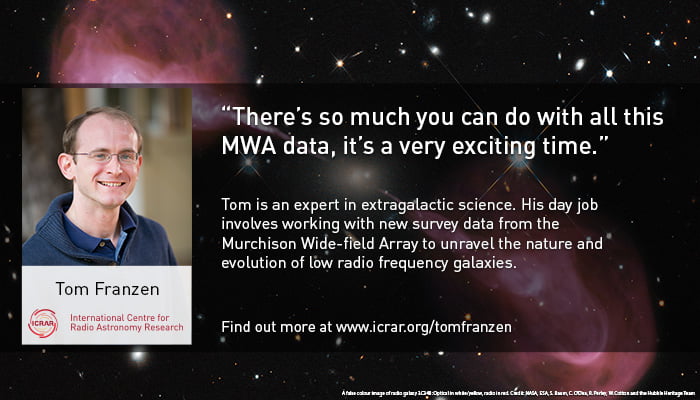When the next generation of revolutionary new radio telescopes come online in the coming decades, talented young researchers like Tom Franzen are set to be at the forefront of new discoveries that are yet be imagined.
Tom is an expert in extragalactic science and uses radio astronomy surveys to study radio galaxy populations.
For reasons not entirely understood, supermassive black holes at the centres of galaxies sometimes spew out jets of energetic particles, and the jets produce enormous lobes of radio emission that expand over time. These lobes are one of the two major components of a radio galaxy that Tom looks for, along with the Active Galactic Nucleus (AGN).
By combining data from high and low frequency radio surveys, Tom is able to observe both of these components and find out more about what triggers jet activity, and how this might relate to star formation.
Tom moved to ICRAR from CSIRO in April 2014 and is already making use of data from the Murchison Widefield Array (MWA), exploiting overlaps with other radio, optical and infrared surveys to extract as much information as possible about the nature and evolution of galaxies.
“I think it’s really fantastic to have all this MWA data which is now coming out from these surveys,” he says. “There’s so much you can do with it… it’s a very exciting time.”
“If you can build up samples of sources where you can get information about both what’s happening on short time scales, the recent active galactic nucleus activity, and evidence of previous activity, which you can see in the radio lobes, that can provide important new information about how radio galaxies evolve,” he says.
